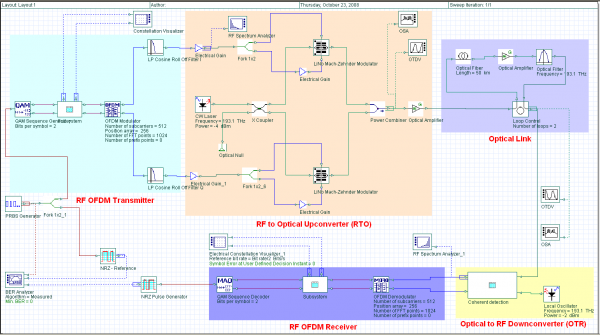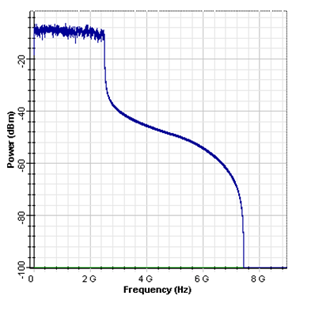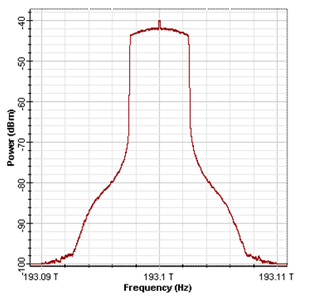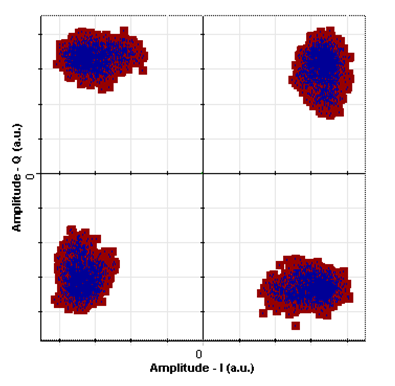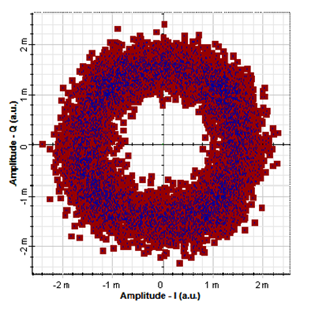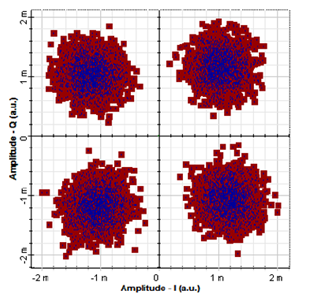Applications
- Long-haul 100 Gbps and higher data rate DWDM transmission systems.
- High-speed multi-mode fiber transmission for interconnects in data centers and high performance computing.
- Optical Ethernet in Automotive.
Coherent Optical OFDM Layout
Benefits
- Multi-parameter scanning enables system designers to study trade-offs with respect to parameters of interest and to choose an optimal design for deployments.
- Interfaces with popular design tools.
- New BER Test Set enables the simulation of millions of bits for direct error counting.
Simulation Description
A generic CO-OFDM system includes five basic functional blocks: OFDM transmitter, RF to optical (RTO) up-converter, optical link, optical to RF (OTR) down-converter, and OFDM receiver. The above schematic demonstrates a 10 Gbps coherent 512-subcarrier 4-QAM OFDM system; however the input data for the OFDM modulator can have different modulation formats such as BPSK, QPSK, QAM, etc. At the transmission block, both modulation and multiplexing are achieved digitally using an inverse fast Fourier transform (IFFT). The subcarrier frequencies are mathematically orthogonal over one OFDM symbol period. A CW laser and two Mach-Zehnder modulators are used to up-convert the RF data to the optical domain. The signal is then propagated through the optical link and becomes degraded due to fiber impairments. A coherent receiver with a local oscillator is used to down-convert the data to the RF domain, and finally data is demodulated and sent to the detector and decoder for BER measurements.
The RF spectrum for the in-phase component and the generated optical OFDM spectrum after I/Q modulation is shown below.
After propagating through 60 km SMF 28 fiber, the recovered signal constellation diagram at the RF OFDM receiver is shown below.
For transmission of an optical OFDM signal over a long length of fiber, electronic dispersion compensation is necessary. As an example, a 10 Gbps coherent 4-QAM OFDM is transmitted through a 3000km SMF 28 fiber link. The received signal constellation diagram with and without electronic dispersion compensation is presented here:


